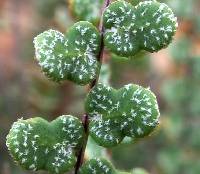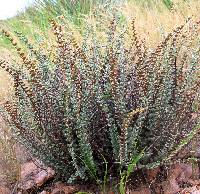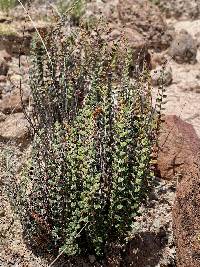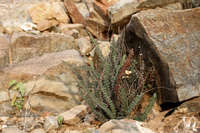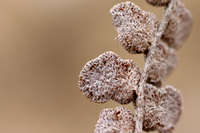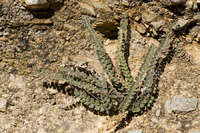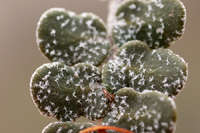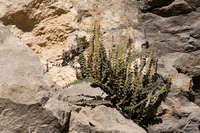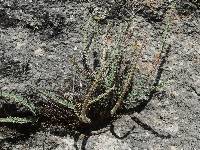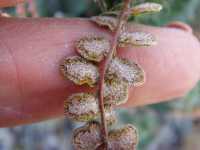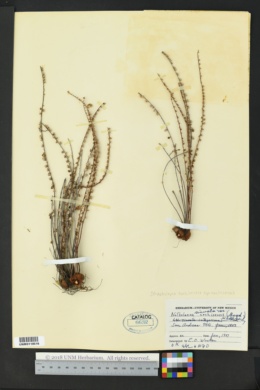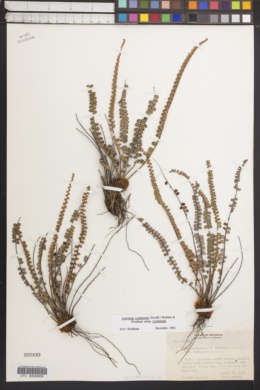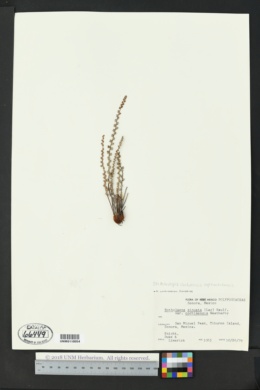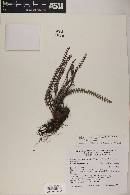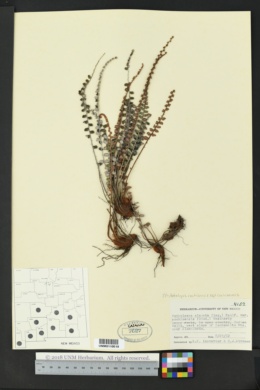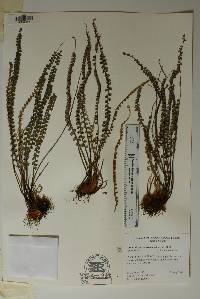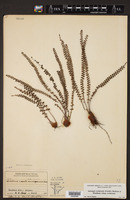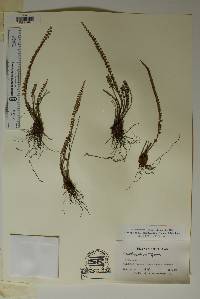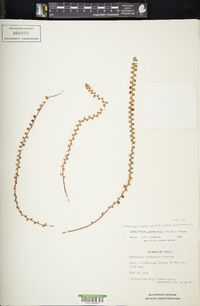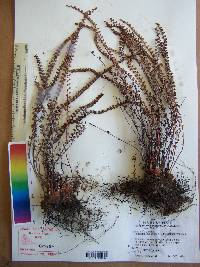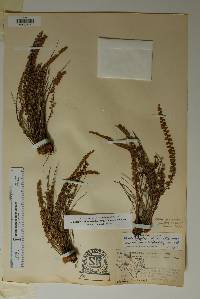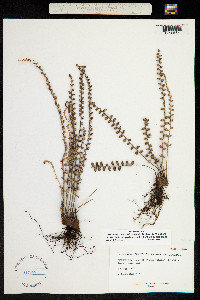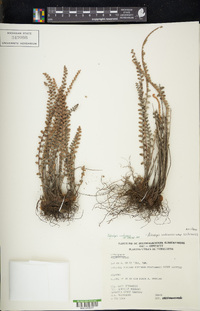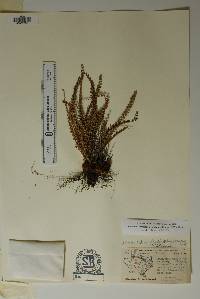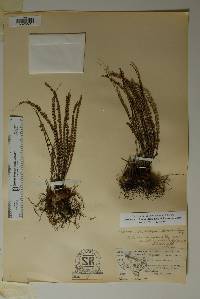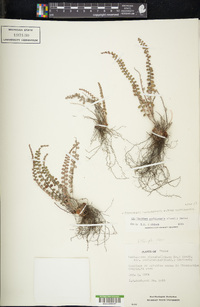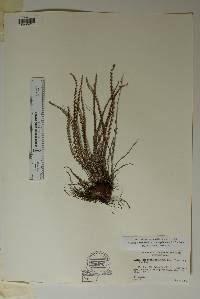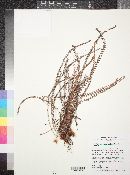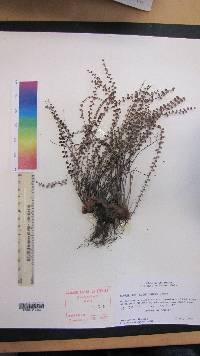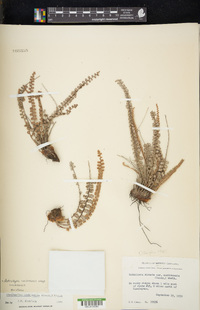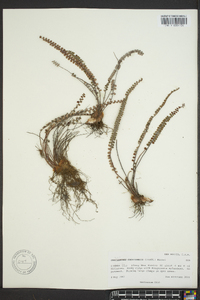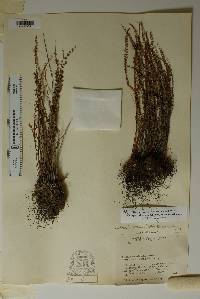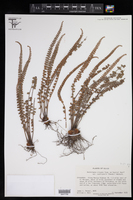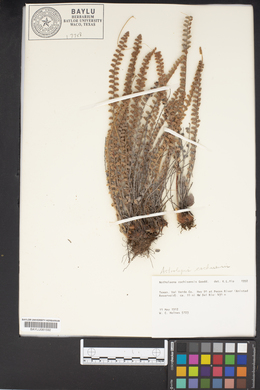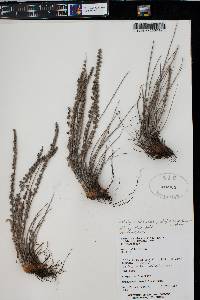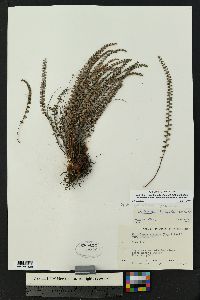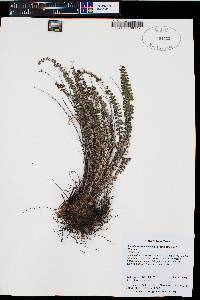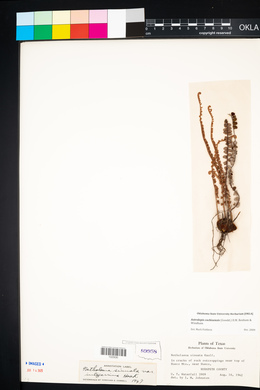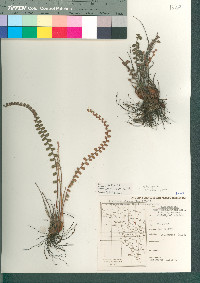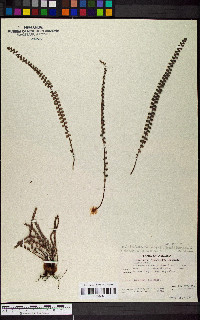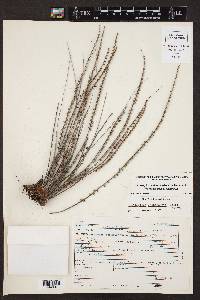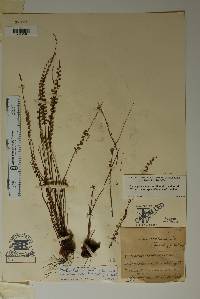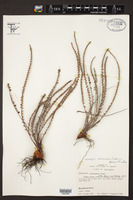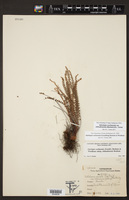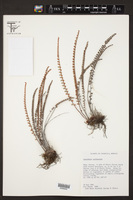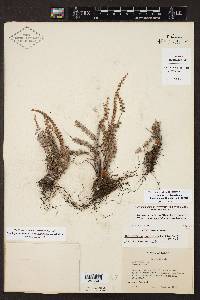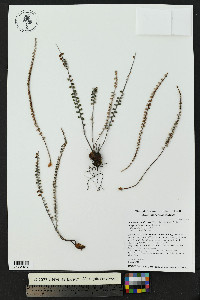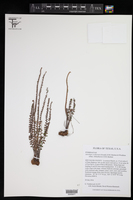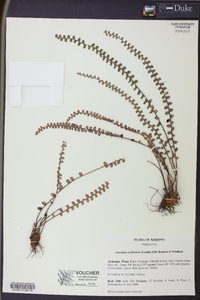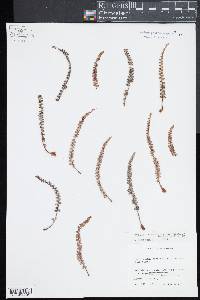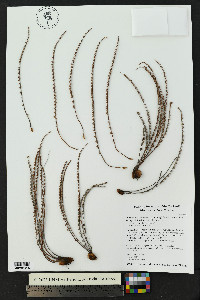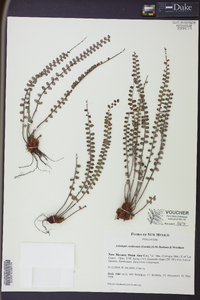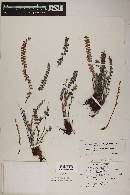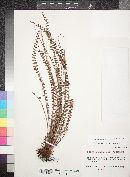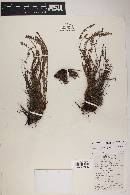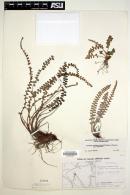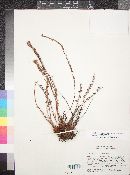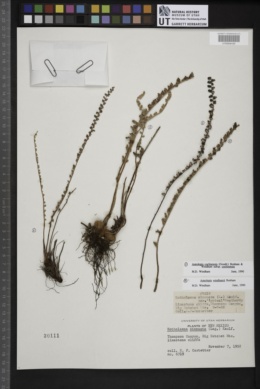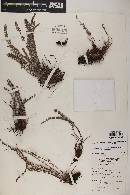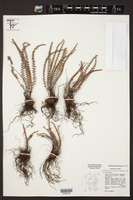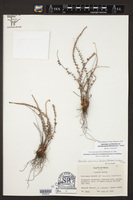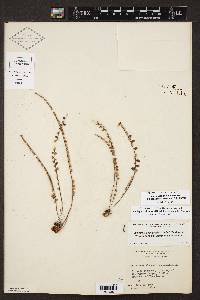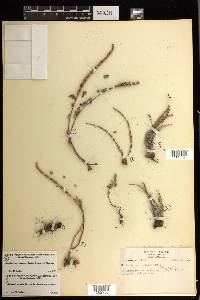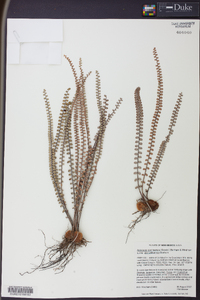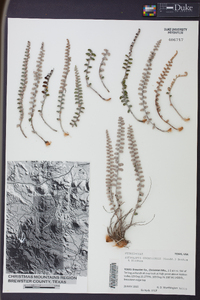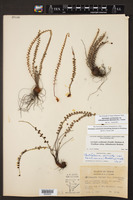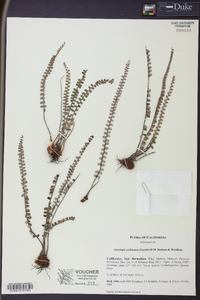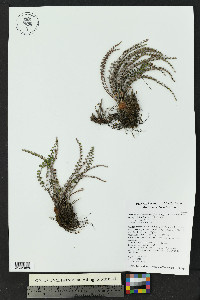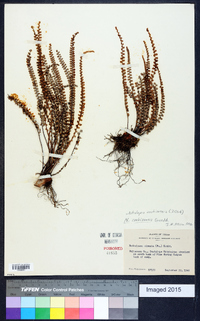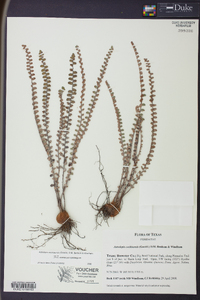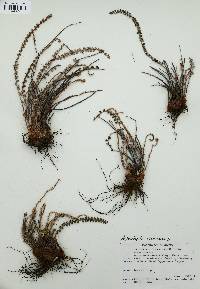Astrolepis cochisensis
|
|
|
|
Family: Pteridaceae
Cochise Scaly Cloak Fern, more...Cochise scaly cloakfern, Cochise cloakfern
|
Stems compact; stem scales uniformly tan or somewhat darker near base, to 10 mm, margins ciliate-dentate to entire. Leaves 7--40 cm. Blade 1-pinnate to pinnate-pinnatifid, pinna pairs 20--50. Pinnae oblong, largest usually 4--7 mm, entire or asymmetrically lobed, lobes 1--4, broadly rounded, separated by shallow sinuses; abaxial scales completely concealing surface, ovate, usually 0.5--1 mm, ciliate with coarse marginal projections; adaxial scales sparse, deciduous, stellate to coarsely ciliate, mostly circular to elliptic, peltate, body more than 5 cells wide. Sporangia containing 32 or 64 spores. Astrolepis cochisensis is reported to be toxic to sheep (F. P. Mathews 1945). Three cytotypes that occupy different ranges and/or habitats have been identified and are treated here as subspecies. These include a sexual diploid (subsp. chihuahuensis ) found on calcareous substrates in the Chihuahuan Desert; an apogamous triploid (subsp. cochisensis ), which inhabits primarily calcareous substrates in the Sonoran, Mojavean, and western Chihuahuan deserts; and an apogamous tetraploid (subsp. arizonica ), which occupies primarily noncalcareous substrates in southern Arizona. Isozyme analyses suggest that subsp. cochisensis is an autotriploid derivative of the diploid subsp. chihuahuensis (D. M. Benham 1989). Both the isozymes and substrate preferences of subsp. arizonica indicate, however, that it is not a simple autotetraploid and that other taxa remain to be discovered within the Astrolepis cochisensis complex.
General: Perennial fern with compact stems, scales tan or somewhat darker near base, to 10 mm, margins ciliate-dentate to entire. Leaves: Blades 7-40 cm long, 1-pinnate to pinnate-pinnatifid, with 20-50 pinna pairs; pinnae oblong, largest usually 4-7 mm, entire or asymmetrically lobed, lobes 1-4, broadly rounded, shallowly separated, scales completely concealing surface beneath, ovate, usually 0.5-1 mm, ciliate with coarse marginal projections; upper scales sparse, deciduous, stellate to coarsely ciliate, mostly elliptic, peltate, body more than 5 cells wide. Sporangia: Containing 32 or 64 spores, sori rounded or oblong, born submarginally at tips of veins, often confluent, indusia wanting, sporangia concealed or obscured by scales. Ecology: Found on rocky hillsides, on canyon walls, under rocks and along the edge of boulders from 1,000-7,000 ft (305-2134 m); sporulating summer and fall. Notes: Some good characters to separate it are the fuzzy, rounded leaflets, which are not in-rolled. There are two subspecies in Arizona, ssp. cochisensis favors limestone and other calcareous substrates, while ssp. arizonica favors granite, quartzite and other noncalcareous substrates (only occasionally is the latter found on limestone). Etymology: Astrolepis is from the Greek astron, a star, and lepis, scale, which refers to the scales on the blade surface, while cochisensis refers to Cochise, the great Apache leader. Sources: FNA 1993, Wiggins 1964, Kearney and Peebles 1969 FNA 1993, Wiggins 1964, Kearney and Peebles 1969 Common Name: Cochise scaly cloakfern General: Perennial fern with compact stems, scales tan or somewhat darker near base, to 10 mm, margins ciliate-dentate to entire. Leaves: Blades 7-40 cm long, 1-pinnate to pinnate-pinnatifid, with 20-50 pinna pairs; pinnae oblong, largest usually 4-7 mm, entire or asymmetrically lobed, lobes 1-4, broadly rounded, shallowly separated, scales completely concealing surface beneath, ovate, usually 0.5-1 mm, ciliate with coarse marginal projections; upper scales sparse, deciduous, stellate to coarsely ciliate, mostly elliptic, peltate, body more than 5 cells wide. Sporangia: Containing 32 or 64 spores, sori rounded or oblong, born submarginally at tips of veins, often confluent, indusia wanting, sporangia concealed or obscured by scales. Ecology: Found on rocky hillsides, on canyon walls, under rocks and along the edge of boulders from 1,000-7,000 ft (305-2134 m); sporulating summer and fall. Notes: Distinguishing characters for the genus are once-pinnate leaves with rounded, lobed pinnae, dense scales covering pinnae surfaces underneath and the dense to sparse stellate scales on the upper surfaces. A. cochinensis distinguished from other species by pinna <7mm (>7 in the others) and the intermediately-sparse peltate scales on upper leaf surfaces. There are two subspecies in Arizona, ssp. cochisensis favors limestone and other calcareous substrates, while ssp. arizonica favors granite, quartzite and other noncalcareous substrates (only occasionally is the latter found on limestone). Ethnobotany: Unknown Etymology: Astrolepis is from the Greek astron, a star, and lepis, scale, which refers to the scales on the blade surface, while cochisensis refers to Cochise, the great Apache leader. Synonyms: None Editor: SBuckley 2010, FSCoburn 2015 |
|
|
|



